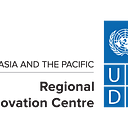‘Desperately Interesting’ — Reflections on our recent Portfolio Sense Making Workshop
by Titon Mitra, Resident Representative in UNDP Philippines
Most of us who work in the development sector make the assumption that a certain level of collective rationality guides our decision making — that is, we automatically and habitually exercise ‘common sense’. Taken literally, that means we assume that we have ‘shared ‘(common) ‘knowledge’ (sense) and we apply this systematically to achieve the greatest impact possible (the optimal effect) in our work.
After three days of a ‘portfolio sensemaking’ workshop examining UNDP projects in the Philippines, however, I am left questioning whether common sense is as common as I thought! What became abundantly apparent is that when you put a collection of team leaders, project managers and other staff in a room to reflect on the ‘why’, ‘what’ and ‘how’ of our interventions, what I assumed as common sense/shared knowledge, was in limited supply and a lot of concerted, intentional, and integrated effort had to be applied to develop a shared pool of judgment. The portfolio sensemaking methodology provided a very useful vehicle for doing so.
I can see some clues from my now rather outdated knowledge of psychology (which I studied nearly three decades ago!) as to why we as an institution may struggle with common sense: it has a lot to do with how innate behavior interacts with the way we structure and manage our portfolios of interventions or projects.
UNDP projects are clustered by sector or thematic area and largely managed as individual interventions. Systematic collective reflection on the sum of the parts is seldom undertaken. Students of psychology will tell you that our brains are conditioned by the environment in which we interact and as our interactions and contexts vary, we individually form different perceptions of reality. We also process data in different ways, so we accumulate knowledge based on our own unique experiences, interests, and priorities. Consequently, the way we approach problems and our solutions can also be formed by a very individualized perception of what works and does not work.
When we combine this rather rudimentary aspect of psychology with the way we structure and manage our portfolio, it’s easy to see how siloed we become in the way we learn and manage. We fail to see potential connections between what we do across an entire program, draw out lessons that can be applied in different contexts, and identify the critical gaps that if filled, can result in both accelerated and system-wide impact.
The problem is not only one for UNDP. The nature of today’s complex and highly inter-related development challenges mean governments must also fundamentally alter the way they conceptualize, plan and manage interventions. Climate change, conflict, human well-being and consumption and production patterns are sector agnostic. Despite this, just as we have historically done in UNDP, most governments plan for and manage sectorally. They consequently may fail to appreciate the ‘network effects’ of interventions, processes, institutions and relationships.
As we in UNDP try to better appreciate the interactions between different parts of our portfolio and how together they are effecting change (rather than simply trying to understand specific projects in isolation), so too could government. The world is changing too quickly and the ‘wicked problems’ emerging far too rapidly for governments to continue to rely on 5-year plans and long-term visioning. Instead more flexible and responsive periodic strategic risk assessments, iterative and adaptive planning and experimentation leading to rapid scaling may help governments deal with their VUCA (Volatile, Uncertain, Complex and Ambiguous) world. Understanding of development challenges and potential solutions could also emanate from a more citizen-centered focus bringing in different ideas and perspectives with work increasingly taking place across organizational boundaries in a frictionless way.
This is why, for me at least, the sensemaking process we went through is ‘desperately interesting’. Desperately interesting because if we, within UNDP, don’t fundamentally alter our muscle memory from viewing development challenges within our project/sectoral/thematic echo chamber, the development solutions we offer risk becoming dangerously ineffective and irrelevant. The complexity of the challenges we face requires us to collectively and constantly reflect, learn quickly from our reflections and adapt what we do or do things entirely differently. As the old saying goes: “if the only tool you have is a hammer, all the world appears to be a nail”. If we in UNDP cannot make these changes fast enough, how well placed are we to effectively advise governments confronting such a rapidly changing world?
The portfolio sensemaking methodology is one of possibly many ways to systematically reflect on what essentially are our disparate and at times, potentially incoherent interventions. The methodology fully and routinely applied may be difficult for us to accommodate given our need to manage the day-to-day pressure of project delivery. But without some form of systematic and periodic collective reflection, we are in danger of missing the opportunity to quickly acquire common (shared) sense (knowledge). Without common sense we cannot hope to achieve the system-wide impact we aspire towards.
It is time to stop using the term ‘common sense’ as a thought-terminating cliché (“that’s so obvious it’s just common sense”) and see the application of portfolio sensemaking, even in a modified form, as a means to more systematically collectively reflect and learn from what we do. Common sense — in the manner I have expressed it here — cannot and should not be assumed to be a given in UNDP today and may also not be in government and among many development actors. But there is an urgent need for it. So, hopefully we can indeed get desperately interested!
[The author is UNDP Resident Representative in the Philippines.]
